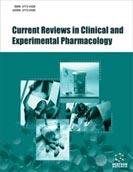Abstract
Missing data due to dropout of patients in randomized clinical trials may be potential sources of bias in the efficacy evaluation of investigational drugs. The biases may be severe when the presence of missing data is substantial. Over the last two decades, extensive research works on dealing with missing data in clinical trials were conducted by both the academicians and pharmaceutical industry statisticians. Majority of the research findings supported the use of Mixed Model Repeated Measure (MMRM) and Multiple Imputation (MI) ANCOVA analyses for efficacy evaluation of study drugs instead of using the conventional last observation carried forward (LOCF) approach to deal with missing at random (MAR) data in drug development research. However, there is a little evidence of exploring the impact of increases in the prevalence of missing data on biases in the statistical inferences obtained from MMRM and MI ANCOVA analyses. In this paper, an attempt is made to explore the impact of increases in the prevalence of missing data on the biases drawn from the above two approaches based on an extensive simulation study.
Keywords: ANCOVA, MAR, Missing data, MMRM analysis, Multiple imputation, LOCF.
Graphical Abstract
 25
25



